Ducati Unveils Desmosedici GP10

Ducati unveils Desmosedici GP10
Riders Casey Stoner and Nicky Hayden and the GP10 were revealed from a cocoon of red balloons at the event jointly hosted by Ducati and Ferrari.
The Desmosedici received a more endurable engine to meet rule changes limiting teams to six engines per rider for the entire season.
The main changes to the bike are based on the rule changes, so the major part of the work was done precisely to make it perform better using only six engines for the entire championship, says Claudio Domenicali, general manager of Ducati Motor. Its a very important difference, because we were used to using more-or-less one engine per race, so to switch from eighteen engines to six is a very important adjustment. To go 1,600 kilometers (995 miles) with an engine that goes over 19,000 rpm isnt a simple assignment. All of the main parts were redesigned pistons, rods, crankshaft, the basics. Its an engine with which our main objective was to minimize the loss of power to increase durability.
According to Domenicali, the GP10s engine is comparable to Ducatis production engines in terms of durability.
The other big change was to make the Desmosedici easier to ride. In recent years, the Desmosedici has developed a reputation for being almost unrideable by anyone besides Stoner. To address the issue of rideability, Ducati followed Yamaha s direction by using a big-bang firing order. Stoner and Hayden tested the new big-bang GP10 at the post-season test in Valencia, Spain.
The new big bang firing order that the Ducati engineers have been working on is definitely a step forward: it has improved traction and handling and it has reduced the bikes tendency to wheelie, says Stoner. Now we have to work on finding the right settings for the GP10 and understanding how the bike reacts to different set-up changes, which will be different to the old bike.
The Desmosedicis chassis received significant updates in 2009, but Ducati continued to tinker with it to improve rideability. The rear of the bike including the seat and swingarm supports has been redesigned with six mounting points instead of four. The adjustment gives the Desmosedici added rigidity, which Ducati hopes will translate to better rideability.
The biggest beneficiary of improved rideability will be Hayden who struggled early in 2009 before showing some improvement as the year continued. Hayden found himself in some trouble with Ducati after posting a picture of the GP10 without sponsor decals on his personal website in December.
I have high hopes for 2010: I like the bike I rode in the test at Valencia and Im pleased with the changes, says Hayden. Now we have to find a good base set-up that is going to work at different circuits so that we can get straight on the pace without having to change too much.
| Ducati Desmosedici GP10 Specs: | |
| Engine: | Liquid-cooled, 90 degree V4 four-stroke, desmodromic DOHC, our valves per cylinder. |
| Capacity: | 799cc |
| Maximum power: | More than 200hp |
| Maximum speed: | In excess of 310 kph/192 mph |
| Transmission: | Six-speed cassette-type gearbox, with alternative gear ratios available. Dry multiplate slipper clutch. Chain final drive. |
| Carburation: | Indirect Magneti Marelli electronic injection, four throttle bodies with injectors above butterfly valves. Throttles operated by EVO TCF (Throttle Control & Feedback) system. |
| Fuel: | Shell Racing V-Power |
| Lubricant: | Shell Advance Ultra 4 |
| Ignition: | Magneti Marelli |
| Exhaust: | Termignoni |
| Final Drive: | Regina Chain |
| Suspension: | Öhlins upside-down 48mm front forks and Öhlins rear shock absorber, adjustable for preload, compression and rebound damping. |
| Tires: | Bridgestone 16.5" front and rear |
| Brakes: | Brembo, two 320mm carbon front discs with four-piston callipers. Single stainless steel rear disc with two-piston callipers. |
| Dry weight: | 150 kg (331 lbs.) |

Motorcycle.com presents an unrivaled combination of bike reviews and news written by industry experts
More by Motorcycle.com Staff



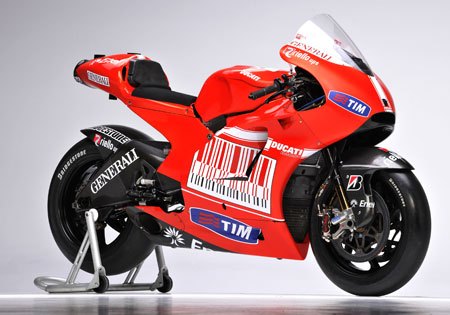









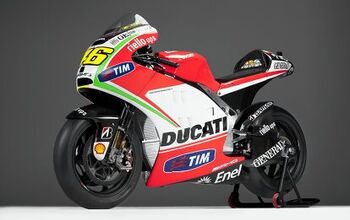
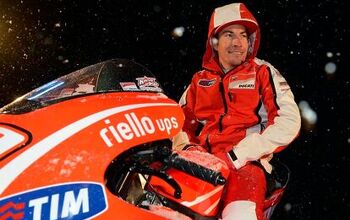
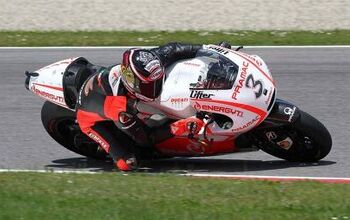

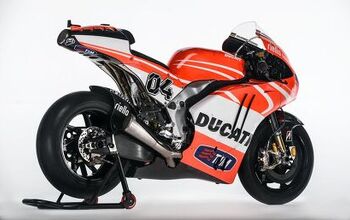










Comments
Join the conversation